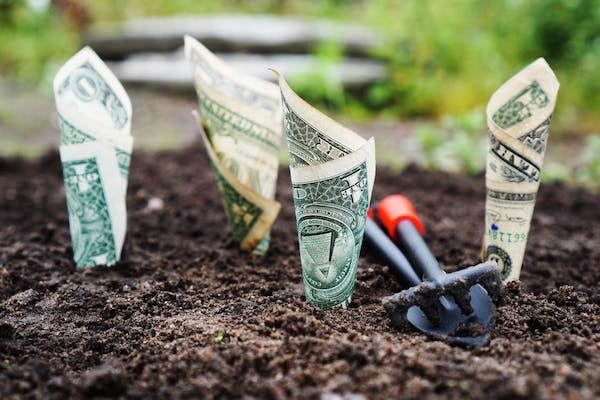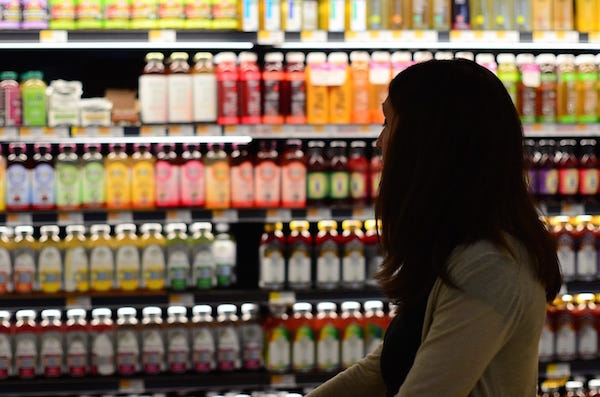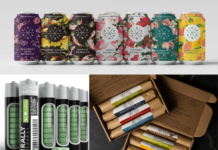
Many of the food entrepreneurs that we work with often reflect that their on-the-ground, sweating-making-payroll, down-and-dirty experience has been just as valuable as pursuing an MBA. All learning costs something, and both successes and failures in today’s marketplace provide a rich if harrowing educational landscape for today’s aspiring entrepreneur.
We have found that the best entrepreneurs are constantly seeking new learning experiences. This includes getting constant feedback from their customers, to reaching out to potential mentors for advice, to attending industry events and tradeshows to network with and learn from their peers and industry veterans. Sometimes, learning means “un-learning” something these entrepreneurs thought was essential to their business when they launched, whether their packaging or messaging or even their original business model. In short, good food entrepreneurs learn to adapt and know that some of their original assumptions will be proven wrong as they validate their products in the market.
Continuous learning is also essential to business success, due to an ever-changing consumer marketplace, funding environment and supply chain. Few imagined the emergence of the thousands of niche brands that now offer consumers an ever expanding supply of choice or what that would do to go-to-market strategies of up and coming brands, or even the viability of new brands seeking to compete with the players in big food. Because consumers’ preferences changed (and continue to change) faster than the big food companies have been able to react, new opportunities opened up to aspiring food entrepreneurs, but only if those food entrepreneurs have their fingers on the pulse of that change through seeking feedback from their customers.
On our most recent podcast, Ron Williams Jr. advocates continuous learning as essential to successful entrepreneurship. In his own business of running a successful, diversified food hub, he points to past classes about crab pasteurization, his training with FFI and current coursework with the University of Maryland Institute Of Applied Agriculture as helping improve his operational bottom line. In his experience, combining continuous learning with diversification of revenue and product sources has led his hub to increased success.
We encourage food entrepreneurs to constantly seek new learning experiences as they grow their business. When these entrepreneurs constantly learn about their customers and the changing marketplace, they are more likely to build a successful company and a culture of learning that can keep their business nimble and viable.
And now, our roundup of the best food and beverage finance news, events and resources from around the web…
 Business Model Insights
Business Model Insights
- Do I Launch in Retail Grocery? (Intertwine Group) – “Retail grocery is not always the best place for an early-stage CPG product. In fact, it very well could be the worst. Most stores have over 35,000 SKUs. As a new brand, you have to find your way onto the shelf, somehow interrupt consumers’ habitual shopping behaviors and hopefully find your way into their shopping carts. That is not easy. How do you determine if retail grocery is the right channel strategy? There is no simple answer, but there are a few variables to examine. The first is the need-state. If you want consumers to discover your brand, doesn’t it make sense to be available where and when the need is most acute? A second consideration is the ability to drive trial. A third is the cost of driving that trial.”
- Subscription Box Startup SnackNation Built a Second Business Selling Insights to Food Companies (Entrepreneur)
- Why new brands need both e-commerce and retail strategies (New Hope Network)
 Raising Capital
Raising Capital
- Analyze your packaging like an investor (New Hope Network) – “Investors know that a product’s packaging is crucial to its success in retail. Within the hyper-saturation of the natural food and supplement markets, your packaging should strive to be economical while also embodying that which makes your product unique. Investors look at where the business is in its life cycle; in situations where a brand is in 10 thousand stores, a change in packaging could be quite expensive in order to replace the product.”
- When Pitching Investors, Your Product Doesn’t Matter (as Much as You Think) (Entrepreneur)
- How to Establish Business Credit for the First Time (SBA Blog)
 CPG/National Brands
CPG/National Brands
- How to valuate your brand (New Hope Network) – “How can brands price their valuation realistically to not lose credibility? It depends a lot on the stage of the brand. Early on, you are really selling yourself, your team and your vision for the brand. It also depends on the value the investor brings. If you are going to be a successful brand, you are likely going to raise a $10 million check from an institutional investor. When you do that, that investor is typically looking to triple their money.”
- As Big Food sheds brands, smaller firms look for opportunities (Food Dive)
- How much does it cost to get on shelf? (New Hope Network)
Market Trends
- Mintel announces 3 global food, drink trends for 2019 (Refrigerated & Frozen Foods) “In 2019, support of and demand for more corporate sustainability programs will grow as consumers better understand what’s required to get closer to achieving a truly circular food and drink economy. These sustainability efforts will include not only improving access to recycling, but [also] creating products with ingredients that are grown in accordance to regenerative agriculture practices. Expect to also see food and drink manufacturers look to the beauty and personal care industry for inspiration for healthy ageing product development. We predict the rising segment of consumers who are often on-the-go, yet want to spend more time at home will increase demand for upscale, ‘speed scratch’ solutions and restaurant-quality, ready-to-consume products.”
- Whole Foods Market unveils top 10 food trends for 2019 (New Hope Media)
- Acosta reveals Top 10 CPG industry predictions for 2019 (Refrigerated & Frozen Foods)
Farming and AgTech
- Building a Good Credit Score for Ag Financing (Compeer Financial) – Most young or beginning farmers have the passion, energy and strong work ethic needed for a career in agriculture. The challenge is building the capital necessary to receive Ag financing, cover a down payment on real estate, buy equipment, or livestock. The problem is, it’s a chicken and egg scenario. In order to obtain the funds to start farming, a beginning farmer is probably going to have to get a loan. In order to get a loan, he or she needs a good credit score.”
- Chapter 12 Bankruptcies Lower Across Farm Country (Farm Bureau)
- Is Your Farm Operation Ready for Growth? (Compeer Financial)
 Deals/M&A
Deals/M&A
- 7 crucial tips for successful small brand acquisitions (New Hope Network) – “Big companies buying small brands for growth. It’s nothing new or different. But stagnating legacy brands and shifting business fundamentals have forced multinationals to swim further downstream toward smaller, more nimble companies to provoke consumer excitement and engagement. A healthy, continuously growing brand won’t just come from squeezing out a better margin. It’ll ultimately come from focus. There’s so much knowledge out there about moving the brand and business forward.”
- Food Leaders Are Talking Speed. Can They Walk The Walk? (CB Insights)
- Key to M&A success is consumer, shopper approach (Refrigerated & Frozen Foods)
 Industry Events
Industry Events
- Understanding Financial Statements (SCORE) – $, 1/8 in Madison, WI
- FaBsafe Certificate®: Basic Food Safety Training (FaB Wisconsin) – $, 1/23 in Plymouth, WI
- Resilient Farms Conference (Compeer Financial) – $, 1/24 and 1/30 in Utica, IL and Lakeville, MN, respectively
- Chobani Incubator Spring 2019 Application (Chobani) – Free to apply, 1/31 Online Application Deadline
- 2019 Organic Vegetable Production Conference (Dane County Extension) – $, 1/31 – 2/1 in Madison, WI
- MOSES Organic Farming Conference 2019 (MOSES) – $, 2/21 – 2/23 in La Crosse, WI
- Expo West 2019 (New Hope Network) – $, 3/5 – 3/9 in Anaheim, CA
- Nosh Live Summer 2019 (Project Nosh) – $, 6/10 – 6/11 in New York, NY





